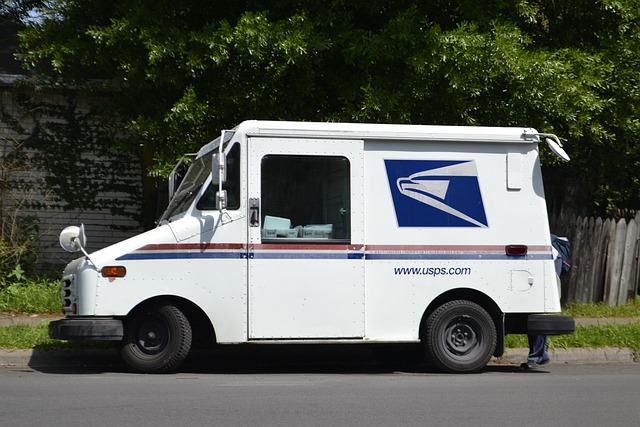Vehicle-to-Vehicle (V2V) communication revolutionizes commuting by enabling real-time data sharing between vehicles, enhancing safety, optimizing traffic flow, and reducing congestion. This technology promises smoother, smarter journeys with potential environmental benefits and regulatory frameworks in development. Integrating V2V into multi-modal networks fosters efficient travel and safer roads for all users.
Modernize your commute with V2V (Vehicle-to-Vehicle) integration, a game-changer in the world of mobility. This cutting-edge technology promises to revolutionize how we travel, making our roads safer and more efficient. From enhancing safety through real-time alerts to enabling smart features within your car, V2V communication is set to transform daily commutes. Discover how it benefits not just traffic flow but also individual travelers, and explore the challenges and future prospects of this promising technology.
- Understanding V2V Integration: A Modern Commute Revolution
- How Vehicle-to-Vehicle Communication Enhances Safety
- Smart Features: What Your Car Can Do With V2V
- Benefits Beyond Traffic: Efficient and Safe Travel
- Overcoming Challenges: Adopting V2V Technology
- Future of Mobility: The Impact of V2V Integration
Understanding V2V Integration: A Modern Commute Revolution

Vehicle-to-Vehicle (V2V) communication is revolutionizing the way we commute. This advanced technology enables cars to ‘talk’ to each other, sharing data in real-time to enhance safety and efficiency on the road. By integrating V2V, vehicles can exchange information like location, speed, and brake status, allowing drivers to make informed decisions instantly. This not only prevents accidents but also optimizes traffic flow, reducing congestion and improving overall mobility.
The future of connected cars lies in seamless V2V integration, with potential environmental benefits as well. Vehicle ad-hoc networks can minimize the need for fixed infrastructure, while regulatory frameworks for V2V are being developed to ensure safety and privacy standards. As more drivers adopt this technology, we can expect a safer, smoother, and more sustainable commute—a true testament to the transformative power of V2V communication in shaping the transportation landscape.
How Vehicle-to-Vehicle Communication Enhances Safety

Vehicle-to-Vehicle (V2V) communication is revolutionizing how we commute, offering a powerful tool for enhancing road safety. By enabling direct communication between vehicles, V2V technology provides real-time data exchange, allowing drivers to be aware of nearby vehicles’ positions, speeds, and even intentions. This proactive approach significantly reduces the risk of collisions, especially in complex traffic scenarios. For instance, if a vehicle suddenly brakes, V2V can alert other cars within range, prompting them to respond accordingly and avoid potential accidents.
The adoption of global V2V standards is crucial for ensuring interoperability across different transportation networks. Cost-effective V2V solutions, developed with modern technology, are making this vision a reality. Integrating V2V into multi-modal transportation networks can further streamline travel, as vehicles can coordinate their movements seamlessly, optimizing traffic flow and reducing congestion. This advanced communication system promises to make our roads safer and more efficient for all users.
Smart Features: What Your Car Can Do With V2V

Vehicle-to-Vehicle (V2V) communication technology is transforming everyday commutes into smarter, safer journeys. With this advanced system, your car can become a powerful tool, offering various smart features that enhance driving experiences. Imagine receiving real-time alerts about potential hazards, traffic congestion, or even the sudden stop of a vehicle ahead – all before you reach those obstacles. This technology enables vehicles to ‘talk’ to each other, sharing data on speed, position, and direction.
By integrating V2V communication, cars can contribute to developing intelligent transportation systems, improving overall road safety. The regulatory frameworks being implemented to support V2V consumer adoption prioritize security in communications, ensuring that these vehicle-to-vehicle interactions are protected from cyber threats. As a result, drivers can benefit from more efficient and responsive commuting, making every journey smoother and safer.
Benefits Beyond Traffic: Efficient and Safe Travel

Vehicle-to-Vehicle (V2V) communication technology is transforming daily commutes into smoother, safer journeys. Beyond simply easing traffic congestion, V2V integration offers a range of benefits that enhance efficiency and security on our roads. By enabling direct communication between vehicles, this emerging transport technology facilitates real-time data sharing, allowing drivers to be aware of potential hazards or traffic conditions ahead. This proactive approach significantly reduces reaction times, making safe vehicle interactions more feasible and reducing the risk of accidents.
Furthermore, V2V networks create a dynamic, interconnected system where each vehicle contributes to the overall efficiency of transportation. They can relay important information about speed, direction, and even vehicle maintenance status, optimizing traffic flow and minimizing delays caused by unexpected incidents or road works. As these technologies advance, we can expect to see even more innovative applications that revolutionize how we navigate our urban landscapes, paving the way for a future with smarter, safer, and more efficient transportation systems.
Overcoming Challenges: Adopting V2V Technology

Adopting Vehicle-to-Vehicle (V2V) communication technology comes with its unique set of challenges, especially as we transition from traditional to modern transportation systems. One of the primary hurdles is ensuring compatibility and interoperability among various vehicle models and manufacturers. Standardizing communication protocols is essential to avoid potential chaos on the roads, where vehicles from different brands struggle to communicate effectively.
Smart cities and transportation infrastructure upgrades play a pivotal role in overcoming these challenges. By implementing robust wireless connectivity solutions, like V2V technology, smart cities can enhance pedestrian safety measures and revolutionize urban mobility. These applications enable real-time data sharing between vehicles, reducing congestion, optimizing routes, and ultimately improving the overall efficiency of transportation networks.
Future of Mobility: The Impact of V2V Integration

The future of mobility is here with the integration of Vehicle-to-Vehicle (V2V) Communication technology. This innovative feature promises to revolutionize our daily commutes, making them safer, more efficient, and seamless. By enabling direct communication between vehicles, V2V technology creates a network that shares real-time data on speed, position, and intentions. This information exchange isn’t just about avoiding collisions; it’s about enhancing the overall driving experience.
In terms of highway safety initiatives and disaster response coordination, V2V integration has immense potential. It can facilitate faster and more effective communication during emergencies, improving response times. Moreover, in multi-modal transportation networks, V2V technology can act as a bridge between different modes of travel, providing a seamless transition for commuters. Additionally, roadside communication systems can benefit from this technology, enabling better maintenance and management of road infrastructure.
Vehicle-to-Vehicle (V2V) communication is set to revolutionize modern commuting, offering enhanced safety and efficiency. By enabling direct vehicle interaction, this technology goes beyond traditional traffic management, transforming travel experiences. As we look towards the future, V2V integration promises a safer, more interconnected mobility landscape. Adopting this innovative approach will require addressing technical challenges but the benefits for both drivers and society as a whole are immense. Select V2V communication is not just a technological advancement; it’s a step towards smarter, safer roads.
